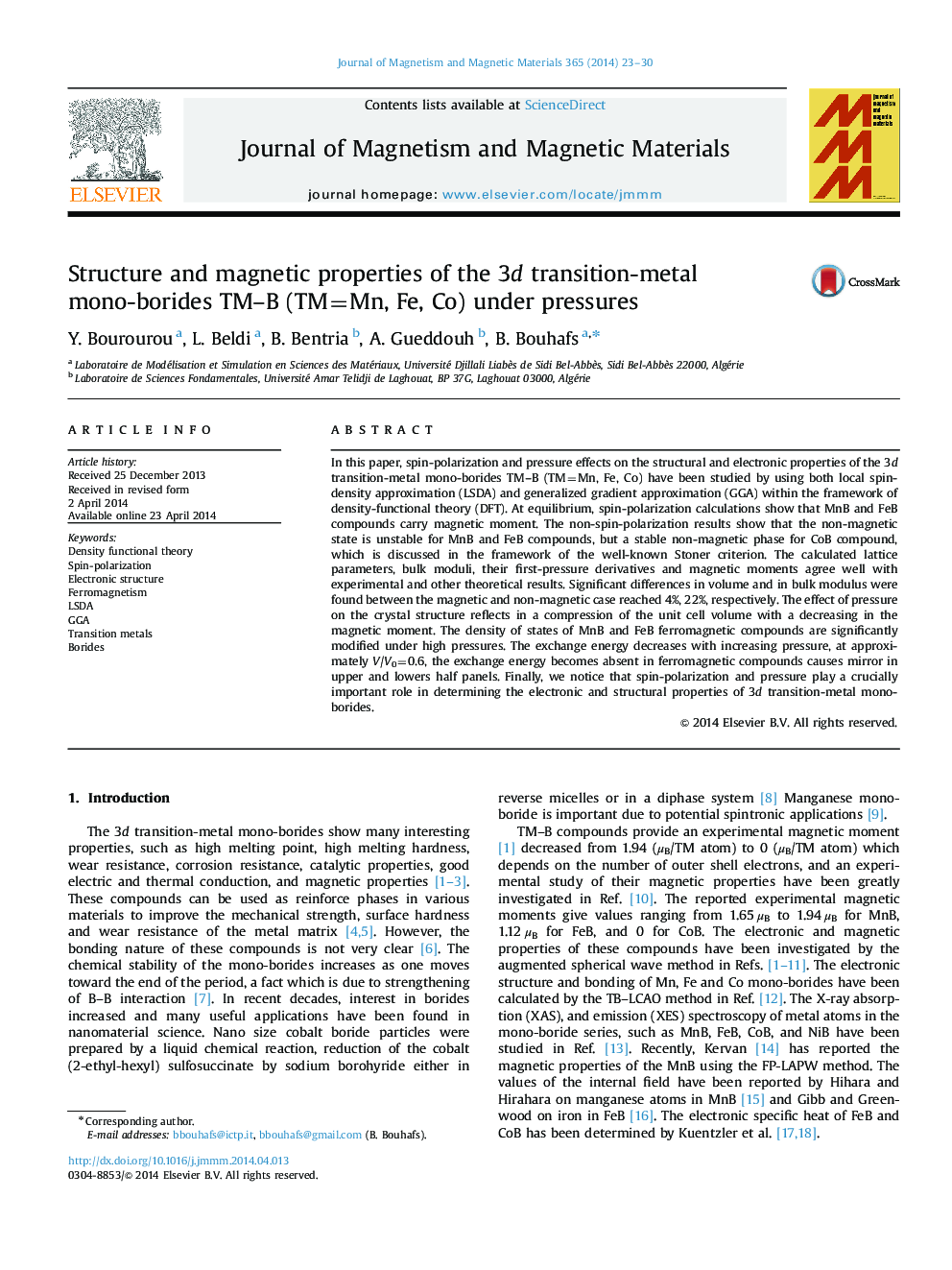| Article ID | Journal | Published Year | Pages | File Type |
|---|---|---|---|---|
| 1799673 | Journal of Magnetism and Magnetic Materials | 2014 | 8 Pages |
•Spin polarization and pressure effects on TM–B (TM=Mn, Fe, Co) have been investigated.•The non-spin-polarization results show that the non-magnetic state is stable for CoB.•The magnetic states of MnB and FeB are found more stable than their nonmagnetic states.•We report significant differences between the magnetic and non-magnetic cases.•The density of states of MnB and FeB are significantly modified under high pressures.
In this paper, spin-polarization and pressure effects on the structural and electronic properties of the 3d transition-metal mono-borides TM–B (TM=Mn, Fe, Co) have been studied by using both local spin-density approximation (LSDA) and generalized gradient approximation (GGA) within the framework of density-functional theory (DFT). At equilibrium, spin-polarization calculations show that MnB and FeB compounds carry magnetic moment. The non-spin-polarization results show that the non-magnetic state is unstable for MnB and FeB compounds, but a stable non-magnetic phase for CoB compound, which is discussed in the framework of the well-known Stoner criterion. The calculated lattice parameters, bulk moduli, their first-pressure derivatives and magnetic moments agree well with experimental and other theoretical results. Significant differences in volume and in bulk modulus were found between the magnetic and non-magnetic case reached 4%, 22%, respectively. The effect of pressure on the crystal structure reflects in a compression of the unit cell volume with a decreasing in the magnetic moment. The density of states of MnB and FeB ferromagnetic compounds are significantly modified under high pressures. The exchange energy decreases with increasing pressure, at approximately V/V0=0.6, the exchange energy becomes absent in ferromagnetic compounds causes mirror in upper and lowers half panels. Finally, we notice that spin-polarization and pressure play a crucially important role in determining the electronic and structural properties of 3d transition-metal mono-borides.
